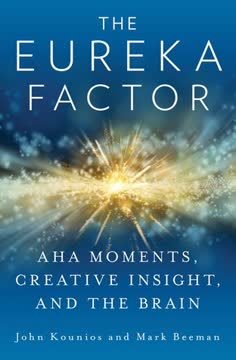Key Takeaways
1. Insight is a Distinct, Sudden Cognitive Leap
Solving a problem is all about how you “see” it.
Sudden realization. Insights, or "aha moments," are not merely the culmination of gradual, analytical thought but a unique, abrupt shift in understanding. Unlike methodical analysis where information accumulates steadily, insight involves a sudden burst of comprehension where a solution appears fully formed, seemingly out of nowhere. This subjective experience of suddenness is validated by objective scientific evidence.
Beyond analysis. Psychologists distinguish insight from deliberate, conscious thought, which they call "analysis." While analysis is a step-by-step process where one can monitor progress, the mental processes leading to an insight are largely unconscious. Experiments using anagrams and forced guesses demonstrated that when people solve problems insightfully, they jump directly to the complete answer, having no prior sense of closeness to the solution.
Real and unique. This "all-or-none" characteristic confirms that insight is a distinct cognitive process. It's a "quantum leap of thought" that reinterprets a problem, allowing one to "see things in a new light." This fundamental difference from analytical thinking makes insight a powerful, yet often unpredictable, force in problem-solving and creativity.
2. The Brain's Right Hemisphere Sparks Creative Breakthroughs
A key area of the right hemisphere lights up at the aha moment.
The spark. Neuroimaging studies using EEG and fMRI have pinpointed the neural signature of an "aha moment": a sudden burst of high-frequency gamma waves in the brain's right temporal lobe, specifically the anterior superior temporal gyrus. This activity, absent during analytical solutions, is literally the "spark of insight," occurring precisely when a solution bursts into awareness.
Remote associations. The right hemisphere's unique role stems from its broad, inclusive processing style. While the left hemisphere is sharp and focused on close associations (e.g., "table" and "chair"), the right hemisphere weakly activates a larger number of distantly related ideas (e.g., "table" and "water table"). This capacity for remote associations is crucial for making novel connections, understanding jokes, metaphors, and filling in narrative gaps.
Complementary roles. Although the right hemisphere provides the initial creative spark, effective, practical creative performance often requires both hemispheres. The right hemisphere generates the novel idea, but the more analytical left hemisphere is essential for evaluating, verifying, refining, and applying that idea in the real world. This collaboration ensures that insights are not only novel but also useful.
3. "The Box" of Assumptions Limits Thought, Insight Helps Break Free
The difficulty lies, not in the new ideas, but in escaping from the old ones, which ramify, for those brought up as most of us have been, into every corner of our minds.
Mental models. Our brains constantly construct "mental models" or "boxes" based on past experiences and knowledge. These boxes help us anticipate events, fill in information gaps, and navigate daily life efficiently. However, they can also constrain our thinking, leading to "functional fixedness"—the inability to see an object or situation beyond its conventional use, as illustrated by the Nine-Dot and Two-String Problems.
Tunnel vision. The brain's anticipation mechanism, while making us "smart" by predicting what's next, can also lead to tunnel vision. We become blind to alternative interpretations or solutions that lie outside our established mental framework. Even brief experiences can quickly form these limiting boxes, and we often remain unaware that we are operating within them.
Transcending limitations. Insight is the cognitive mechanism that allows us to transcend these unnecessary limitations and assumptions. It enables a radical reinterpretation of a problem, breaking free from the old box to consider a wider range of possibilities. This "thinking outside the box" is not about destroying the box entirely, but about replacing an inadequate one with a new, improved perspective.
4. Incubation (Breaks and Sleep) Fosters Insight by Clearing Mental Blocks
Even a soul submerged in sleep is hard at work and helps make something of the world.
Unconscious processing. Incubation, whether during waking breaks or sleep, is a powerful catalyst for insight. When actively working on a problem, we can become fixated on unproductive lines of thought. Taking a break allows these "fixations" to dissipate, making way for less obvious, more fruitful ideas to emerge. This process is supported by the "Zeigarnik effect," where unfinished tasks remain active in memory.
Sleep's magic. Sleep is a particularly potent incubator. It not only facilitates "fixation forgetting" but also enhances "memory consolidation," strengthening remote associations embedded in memories. This means sleep can highlight hidden relationships and implied facts, bringing them to the forefront of awareness. Famous examples like Paul McCartney's "Yesterday" melody and Otto Loewi's experiment design illustrate sleep's profound creative power.
Opportunistic assimilation. When we fail to solve a problem, our brain stores a special, easily retrieved memory of it, sensitizing us to relevant cues in the environment. During incubation, even subtle, unconscious hints can trigger a solution. Exposing oneself to a variety of stimuli and environments during a break increases the chances of encountering such "insight triggers," leading to spontaneous "aha moments."
5. Positive Mood and a "Promotion Orientation" Broaden Attention, Enhancing Creativity
When I am, as it were, completely myself, entirely alone, and of good cheer—say, traveling in a carriage or walking after a good meal … it is on such occasions that my ideas flow best and most abundantly.
Happy mind, broad focus. A positive mood significantly enhances creative insight by broadening both perceptual and conceptual attention. When happy, our minds are free to roam, making it easier to see connections and commonalities among disparate things. This contrasts with negative moods, especially anxiety, which narrow attention, causing "tunnel vision" and focusing on details rather than the big picture.
The anterior cingulate. Research shows that a positive mood activates the anterior cingulate, a brain region that monitors for competing ideas. When energized by happiness, this area becomes more sensitive to subtle, non-obvious solution ideas, allowing them to contend with dominant, analytical thoughts. This "Robin Hood" strategy of elevating weaker ideas is central to the insight mind-set.
Promotion, not prevention. Our motivational orientation also plays a critical role. A "prevention orientation," focused on safety and avoiding loss, narrows attention and favors analytical thought. Conversely, a "promotion orientation," driven by hopes, advancement, and a sense of adventure, broadens the mind, permits risk-taking, and embraces creative leaps. Cultivating a positive mood naturally fosters this promotion orientation.
6. Intuition Signals Unconscious Solutions, Requiring Trust and Understanding
An undercurrent of thought was going on in my mind which gave at last a result.… An electric circuit seemed to close; and a spark flashed forth.
Fringe of consciousness. Intuition is the awareness that an idea, solution, or perspective is present in the unconscious mind, without conscious knowledge of the information itself. It's a "feeling of knowing" that occupies the "fringe of consciousness," often preceding an insight. William Rowan Hamilton's mathematical breakthrough, preceded by an "undercurrent of thought," exemplifies this phenomenon.
Sensing presence, not closeness. Laboratory studies distinguish between sensing the presence of a solution and sensing closeness to it. While we may not feel "warmer" to an insight until it's imminent, we can often intuitively judge whether a problem is solvable at all. This ability suggests that solutions are unconsciously activated, and their presence can be sensed, even if their exact nature remains elusive.
Mood and fluency. Intuition is influenced by mood and "fluency"—the ease of a mental process. A positive mood sharpens intuition, while a negative mood dulls it. When a problem's parts are unconsciously connected to a solution, they are processed more fluently, triggering a subtle burst of pleasure that the brain interprets as an intuition of solvability. However, intuition is fragile; analytical thought can overwhelm it, and misinterpreting the source of emotions can lead to false hunches.
7. Insightful Thinkers Possess Unique Brain States and Cognitive Styles
Whoever cannot seek the unforeseen sees nothing, for the known way is an impasse.
Distinct brain patterns. Insightful individuals, compared to analytical thinkers, exhibit distinct brain activity even in a resting state. They tend to have habitually unfocused attention, showing more visual cortex activity at rest, suggesting their "perceptual floodgates are open" to a wide range of information. Their brains also show more right-hemisphere activity, indicating a preference for looser, more remote associations.
Less cognitive control. Insightfuls demonstrate less "top-down" cognitive control from the frontal lobe, making their brains more "disorderly and rebellious." While analysts exert strong control to focus on dominant possibilities, insightfuls are less constrained, allowing unusual possibilities to emerge. This reduced inhibition, while sometimes leading to "odd" thoughts, also empowers creative leaps.
Stable, yet flexible. This "insightfulness" is a relatively stable characteristic, influenced by genetics and brain structure, akin to a "cognitive set point." However, it's not entirely fixed. Factors like time of day (off-peak hours for weaker inhibition), alcohol (reducing inhibition), and voluntary attention broadening can temporarily shift one's cognitive style towards insight.
8. External Motivation Paradoxically Hinders Insight, While Intrinsic Drive Helps
Innovation has nothing to do with how many R&D dollars you have.… It’s not about money. It’s about the people you have, how you’re led, and how much you get it.
The motivation trap. Contrary to popular belief, strong external incentives like prize money or strict deadlines can decrease creative insight. Sam Glucksberg's Candle Problem experiment showed that financial rewards improved performance on analytical tasks but reduced the number of solutions for insight problems, and increased the time taken for those who did solve them.
Narrowed attention. Both strong enticements and threats (like fear of missing a deadline) activate the brain's motivational systems, which tend to narrow and lock attention onto the specific object of desire or fear. This constricted focus inhibits the broad, flexible thinking necessary for remote associations and novel reinterpretations, pushing individuals into an analytical, "prevention-oriented" mindset.
Post-reward creativity. The paradox is resolved by understanding that approach motivation broadens the mind and energizes creative insight when it's a general drive for self-enhancement (a "promotion orientation"), rather than a specific, concrete reward. Creative insight is enhanced after a prize is won, when the pressure is off and a sense of accomplishment fosters a broader, more adventurous mindset, rather than in anticipation of it.
9. Psychological Distance Primes Creative Thought and Broadens Perspective
Toto, I’ve a feeling we’re not in Kansas anymore.
Beyond the immediate. Thinking about things that are "psychologically distant" from oneself—in time, space, social standing, or reality—significantly enhances creative insight. This contrasts with focusing on psychologically "close" elements (nearby places, similar people, immediate future), which narrows attention and biases towards analytical thought.
Mental travel. Examples of psychological distance include:
- Distant future: Imagining a trip a year from now (abstract planning) versus tomorrow (specific details).
- Unusual people/cultures: Thinking about punks or living abroad (adapting to new perspectives).
- Additive counterfactuals: Imagining "what if I had an umbrella?" (adding to reality) versus "what if it hadn't rained?" (subtracting from reality).
The big picture. This principle works by broadening conceptual attention. When we consider distant or abstract scenarios, our minds expand to include a wider range of possibilities and connections, moving from the particular to the general. This "thirty-thousand-foot view" allows for the reinterpretation of elements to form new, meaningful wholes, as seen in Archimedes's and Newton's breakthroughs.
10. Cultivating an "Insightful State" Requires Intentional Environmental and Lifestyle Design
Create the state. It’s the empire of the future.
Designing for insight. To foster creative insights, one can intentionally design environments and lifestyles that induce a brain state characterized by remote associations, broad flexible attention, abstract thought, positive mood, psychological distance, and a promotion orientation. This involves actively counteracting the natural tendencies that narrow our focus.
Environmental cues. Key environmental elements include:
- Spaciousness: Open, airy, soft, rounded, and calm surroundings (e.g., high ceilings) broaden thought.
- Colors & Light: Relaxing colors (blue, green) and dim lighting (obscuring detail) shift thought towards generality.
- Sound: Quiet surroundings, or soft, diffuse ambient noise (ocean waves, coffee shop murmuring) minimize distraction.
- Change: Periodically altering routines or décor destabilizes entrenched thoughts, promoting "fixation forgetting."
- Diversity: Interacting with diverse individuals and cultures primes a "deviance mind-set" and cognitive flexibility.
Lifestyle adjustments. Beyond physical surroundings, lifestyle choices matter:
- Goals: Regularly considering larger, long-range goals induces a promotion mind-set and distant-future thinking.
- Mood: Cultivating a positive mood through joyful activities (music, art, nature) broadens the mind.
- Breaks: Taking breaks when stuck, engaging in unrelated, undemanding activities (housework, gardening) allows for incubation and opportunistic assimilation of hints.
- Sleep: Ample sleep magnifies fixation forgetting and memory consolidation, fostering hidden connections.
- Timing: Performing creative work during off-peak times of day (when inhibition is weaker) can enhance insight.
11. Modern Life's Hyper-Connectedness is an Enemy of the Creative Default State
The truth is, we live in an environment on steroids, far removed from the more relaxed pace of life just one generation ago.
The fragile default state. Our brains possess a "default state" network, active when we are at rest and disengaged from our surroundings. This network is crucial for mental travel through psychologically distant inner worlds—recalling past events, envisioning the future, considering others' perspectives, and exploring abstract ideas—all processes that prime insight.
Constant interruption. Modern life, however, is characterized by "hyper-connectedness, hyper-competitiveness, hyper-availability, hyper-instability." Constant demands for attention from technology (cellphones, social media, emails) and a relentless drive for immediate productivity continuously interrupt this fragile default state. This forces our brains into a perpetual "present moment" focus, hindering quiet introspection and mental travel.
Trading creativity for efficiency. As a society, we are inadvertently sacrificing creativity for a narrow type of efficiency. The constant clamor for attention and the pressure to respond immediately prevent the sustained, unfocused thought necessary for insights to brew and emerge. To compensate, we must intentionally carve out time for inner-directed attention, giving extra weight to the inner world and periodically banishing the "enemies of the state" to reclaim our creative potential.
Last updated:
Review Summary
The Eureka Factor receives mixed reviews, with an average rating of 3.87 out of 5. Readers appreciate the book's insights into creativity and the neuroscience behind "aha" moments. Many find the anecdotes and examples engaging, while some criticize the slow build-up and textbook-like feel. The practical advice on fostering creativity is valued, though some wish for more concrete techniques. Reviewers praise the scientific approach but note that the book may be too dense for casual readers. Overall, it's recommended for those interested in understanding and enhancing their creative thinking processes.
Similar Books



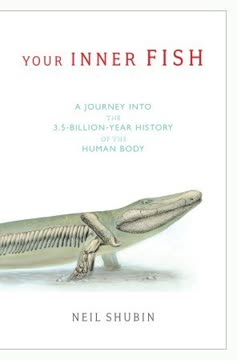
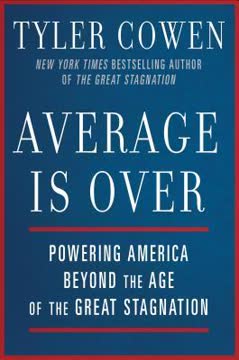
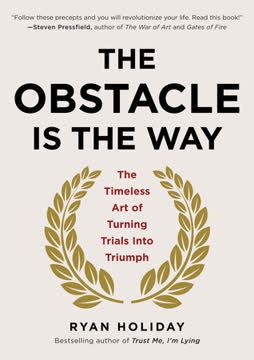

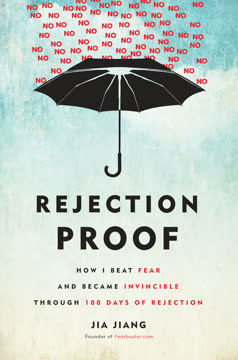
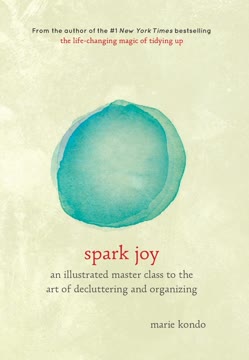

Download PDF
Download EPUB
.epub digital book format is ideal for reading ebooks on phones, tablets, and e-readers.
